

|
| Lope home | Lope themes | work in progress | bio | what's new? | buy prints | contact Lope |
|
|
|
|
November 10, 2005
Yann Martel has an interesting personal story, and it helps the reader better understand his book. His family travelled all over the world when he was younger - his father was a diplomat - and Martel continued to travel as an adult. Could this explain the constant movement of Pi over the course of the novel? There is more
here
.
Martel is currently writing a book on the Holocaust and recently gave a reading at a cafe in Jeruslam (see this article). Sounds ambitious of him, though if he handles it imaginatively as he did the Life of Pi rather than on the level of pure reality, I can see him pulling it off. |
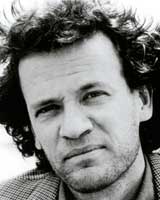
|
|
|
|
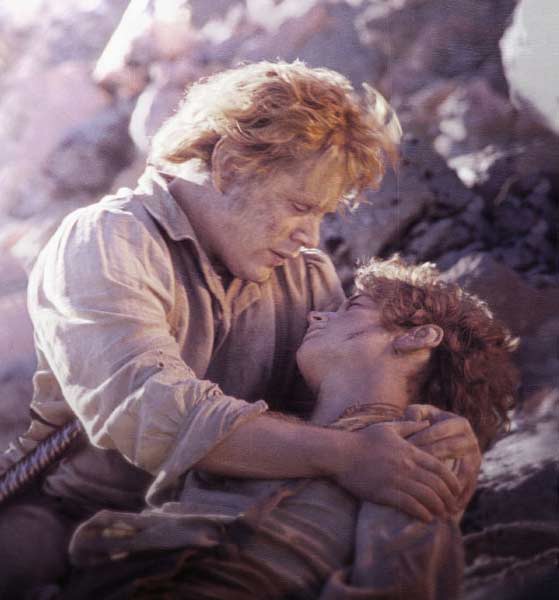
|
November 8, 2005
Does illustrating a book in a sense destroy it? How about making a movie of a book? When illustrators and film makers arrive on the scene a couple years after a book has made it big, they inject their own ideas about a book's visual look into the mainstream. Readers who have already created their own imaginary landscape for a book - take
the Life of Pi
- will find their visual conception of the story overwhelmed by the conception of illustrators and film makers.
I know thats what happened to me with the Lord of the Rings . Though Peter Jackson did a good job overall with the movie, he totally ruined my conception of Frodo and Sam. I used to have a really good picture of the two in my head, built up over five readings of the trilogy. Now all I can see is these two annoying guys - I've forgotten my original conception of them. |
|
|
|
|
November 7, 2005
In the process of learning how to draw meerkats - sleeping meerkats actually. I think I've made around 30 sketches.
Incidentally, there is a purpose to this Life of Pi illustration exercise. Yann Martel recently announced a contest to find an artist for the illustrated edition of Life of Pi . I'm hoping to win but even if I don't, I have to admit that the process of illustrating someone else's imagination is interesting, kinda fun. The writer provides you with the imaginary building blocks; words, phrases, conversations - and you build the tower; the visual look of the story. Isn't this what we all do when we read stories? |
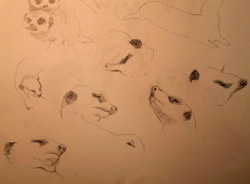
|
|
|
|
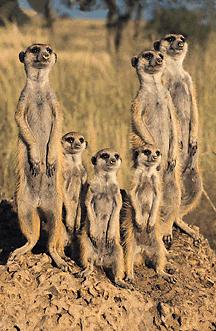
|
November 3, 2005
Meerkats are cute little creatures that eat scorpions. Everything you ever wanted to know about them
here
.
Now why Yann Martel chose meerkats to populate the island in his book is beyond me - its almost like he took an encyclopedia of animals, opened it randomly to the page about meerkats, and thus made his decision. Why not mongooses (mongeese?)? Or possums? Or rabbits? An interesting choice. |
|
|
|
| November 1, 2005 I'm currently working on an illustration for the Life of Pi . The hardest part isn't coming up with an idea, its the weeding out of all the ideas to focus on only one. In this sketch, the main character - Pi - sleeps in a tree, his body completely covered by meerkats. Surreal? Well it was actually in the book. So go read it! |

|
|
|
|
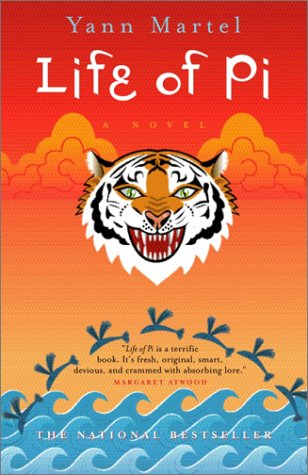
|
October 31, 2005 I just finished reading the book Life of Pi , by Yann Martel. I don't want to spoil it for anyone, so I won't go beyond saying that it is a very strange conglomeration of religion, philosophy, and biology, all mixed together in the tale of a young boy lost at sea with only a tiger as a companion. If you want to give your imagination a workout, this is the book you should get. Admittedly I'm a little late reading it - it came out three years ago - but I didn't like all the hype at the time. I guess it was well deserved hype. |
|
|
|
older work in progress entries:
October 3-13, 2005. Hands, The Struggle, and Castells October 17-24, 2005. Renewable Energy, Propaganda, and Ojbectivist Art |
| Lope home | Lope themes | work in progress | bio | what's new? | buy prints | contact Lope |
